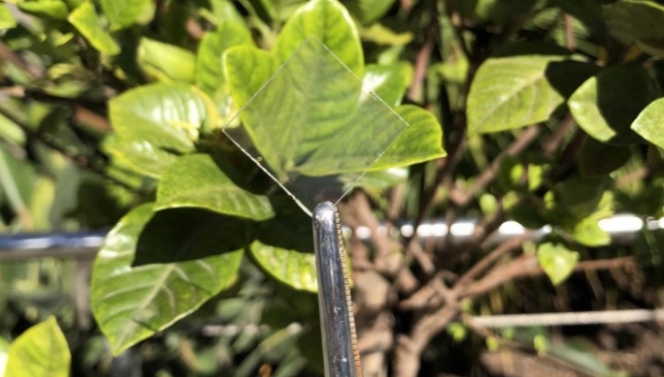
Drexel John Sanchez
Aug 08,2020
New Transparent Spray-on Coating For Windows Can Block Heat And Conduct Electricity For Cheap Smart Solution
After the Empire State Building in New York reported installing smart glass windows, they cut energy usage by $2.4 million and their carbon emissions by 4,000 metric tons, but smart windows are costly. That’s why news of a new transparent spray-on coating that is much more cost-effective—while providing similar performance—is worth shouting from the tops of skyscrapers. The simple method for adding a clear coating to existing windows to block heat and also conduct electricity could radically cut the cost of energy-saving smart windows and heat-repelling glass. Good News Network Good News Good Talks Good Gifts Home All News Science All NewsScience New Transparent Spray-on Coating For Windows Can Block Heat And Conduct Electricity For Cheap Smart Solution By Good News Network -Aug 6, 2020 After the Empire State Building in New York reported installing smart glass windows, they cut energy usage by $2.4 million and their carbon emissions by 4,000 metric tons, but smart windows are costly. That’s why news of a new transparent spray-on coating that is much more cost-effective—while providing similar performance—is worth shouting from the tops of skyscrapers. The simple method for adding a clear coating to existing windows to block heat and also conduct electricity could radically cut the cost of energy-saving smart windows and heat-repelling glass. The spray-on coatings developed by researchers at RMIT University in Melbourne, Australia, are ultra-thin, and rival the performance of current industry standards for transparent electrodes. Transparent electrodes combine the best properties of glass and metals in a single component, which is a highly conductive clear coating that allows visible light through. Those coatings—key components of smart windows, touchscreen displays, LED lighting and solar panels—are currently made through time-consuming processes that rely on expensive raw materials. The new spray-on method is fast, scalable and based on cheaper materials that are readily available. The method could simplify the fabrication of smart windows, which can be both energy-saving and dimmable, as well as low-emissivity glass, where a conventional glass panel is coated with a special layer to minimize ultraviolet and infrared light. Lead investigator Dr Enrico Della Gaspera said the pioneering approach could be used to substantially bring down the cost of energy-saving windows and potentially make them a standard part of new builds and retrofits. “Smart windows and low-E glass can help regulate temperatures inside a building, delivering major environmental benefits and financial savings, but they remain expensive and challenging to manufacture,” said Della Gaspera, a senior lecturer and Australian Research Council DECRA Fellow at RMIT. The ultimate aim is to make smart windows much more widely accessible, cutting energy costs and reducing the carbon footprint of new and retrofitted buildings.” The new method can also be precisely optimized to produce coatings tailored to the transparency and conductivity requirements of the many different applications of transparent electrodes.















Comments